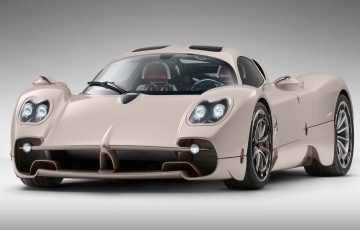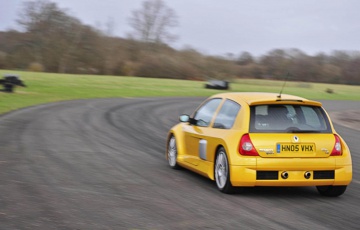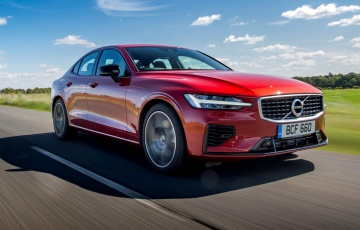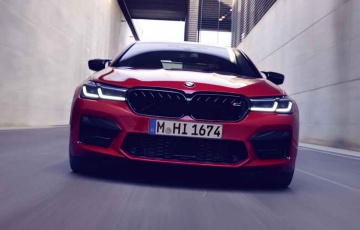Flat out in the Mercedes-AMG GT R
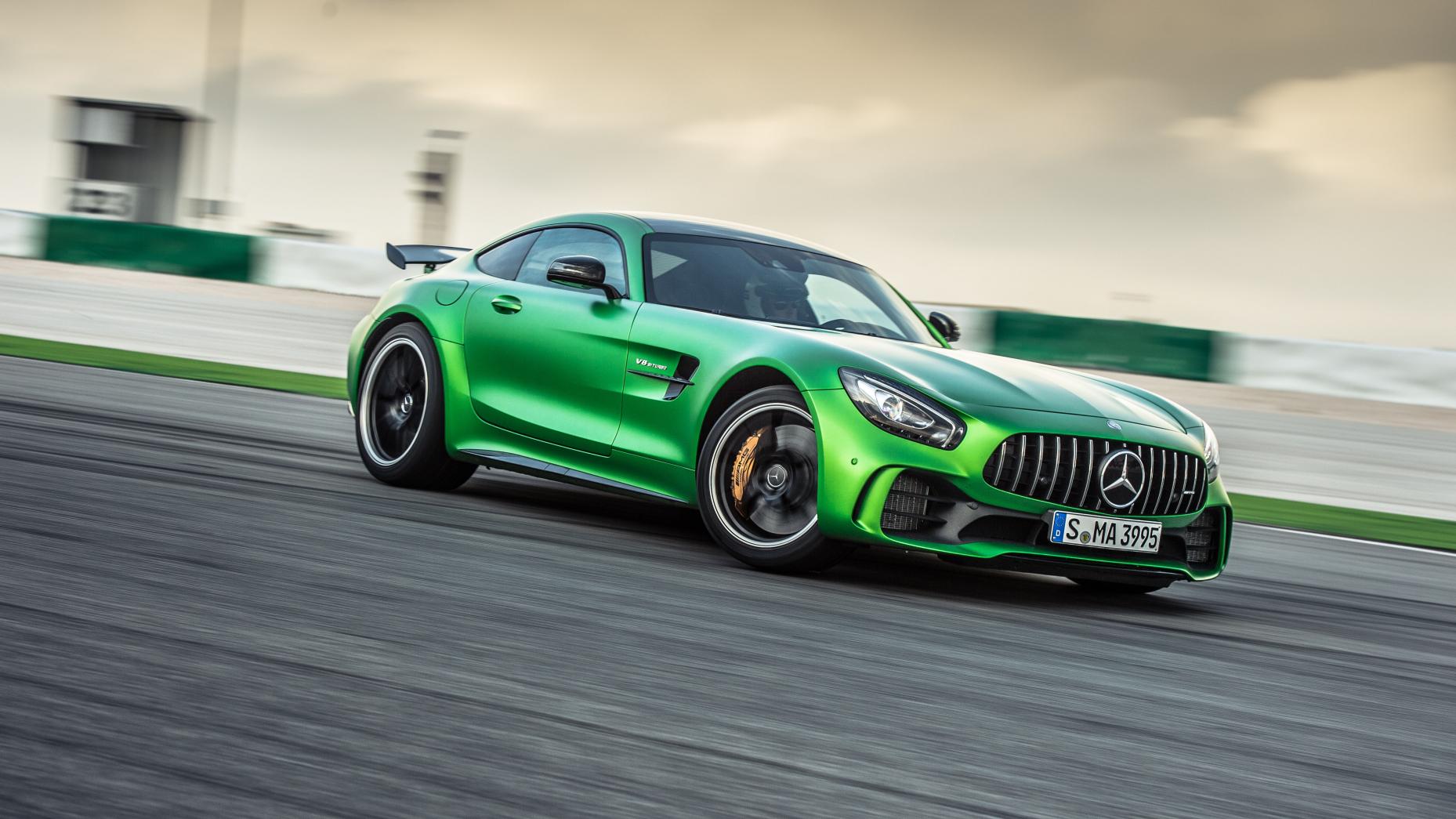
Intimidation, it turns out, is green. And wide, loud, long of bonnet, short of temper, fat of tyre and hairy of arse. Yes, the Mercedes-AMG GT R is a supercar. It conforms to all the tropes except the one that demands the engine should be behind the driver.
So here it is on a track, creating balls-out smoky mayhem, thrashing a set of Michelin’s finest, the vapourised remains of which are filling my nostrils and fugging the cockpit.
A car with more power than traction (with the traction off, obvs) is something everyone ought to experience. It’s up for a spot of bad behaviour, the GT R. Which ought to come as no surprise. Ladies and gentlemen, we have surely reached peak AMG.
But apparently we haven’t. Merc is keen to point out that this is actually a precise track machine. Fast laps, rather than smoky ones, are what it is designed for.
It proved this recently by getting itself around the Nordschleife in 7:10 – ahead of a Viper ACR, Lexus LFA Nürburgring and Ferrari 488 GTB. And that’s before we get started on the really exotic stuff such as a Pagani Zonda F Clubsport or Gumpert Apollo Speed.
So what’s the truth here? Where does the GT R fit into the supercar hierarchy? And what sort of machine is it? A track-focused 911 GT3 RS rival or something with more bandwidth?
We’ve got to grips with the standard AMG GT, and I find it a bit of a handful. It’s a snatchy, fighty car on a bumpy road, and the margin for error, between quick, direct steering and lively back axle, is small.
But wait. Remember the SLS? Well, that was a twitchy device, but when re-engineered as the SLS Black Series it was far more tightly controlled – both faster and more friendly.
And back in the summer I had a passenger ride in the GT R alongside AMG boss Tobias Moers, and came away sensing it was more approachable and had a bigger sweet spot than the standard car.
We’ll start at the front and work back. So there’s a new nose, inspired by the old 300 SL Gullwing racer that won the Panamericana road race in Mexico in 1952, and largely carried over from the GT3 racer.
I’m sure it could be more in-yer-face, but as yet I can’t work out how. There’s lots of aero at work, with moving flaps and slats, an underbody aero panel and carbon-fibre front wings to cover the enhanced track widths.
Wider wheels and special Michelin Pilot Sport Cup 2 tyres are held further away from the body by double wishbone, forged aluminium suspension and controlled by new coilover adjustable spring/damper units.
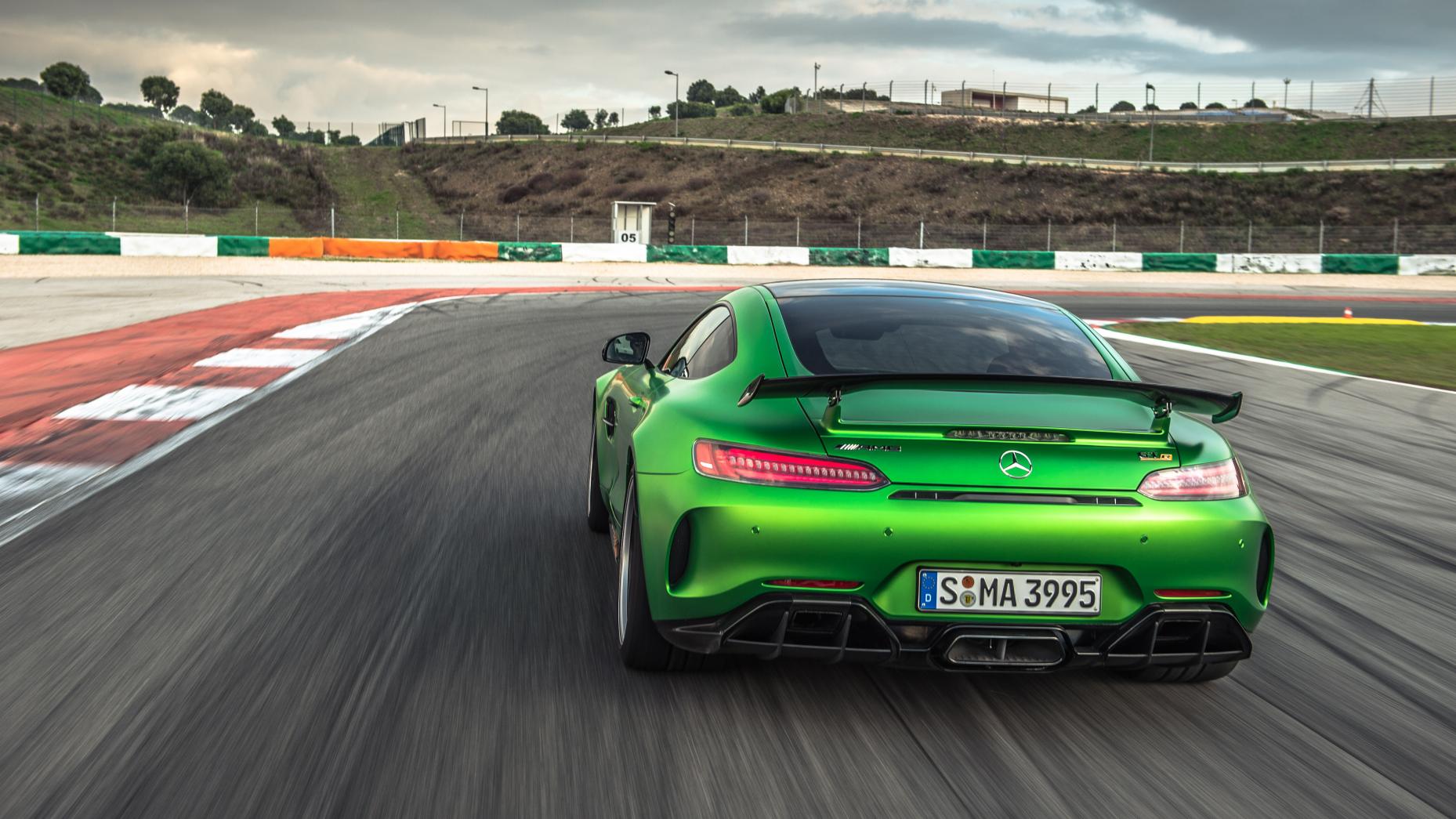
We’ll skate over the drivetrain enhancements here and move further back. Past the carbonfibre torque tube (40 per cent lighter than the GT S’s aluminium item), carbon roof and extra carbon bracing underneath the exhaust (itself now titanium and 6kg lighter) which improves torsional rigidity by 7.5 per cent, and on to the rear. Where you’ll find the transmission (contributing to a rear-biased 47:53 weight distribution) and a whole new back axle.
Now 57mm wider, it features a rear-wheel-steering system run by two electromechanical actuators (there’s no mechanical link to the steering wheel), and can alter the toe angle by 1.5°. The idea is to sharpen up turn-in at lower speeds and improve high-speed stability. Despite all the mods and the chunky rear wing, all-up the GT R is 15kg lighter than the GT S.
That’s a heck of a lot of work done to create a skid chariot, so let’s take AMG at its word and assume this car is a proper lap chaser. We’re at Portimão in Portugal’s deep south, and it’s fantastic: a plunging, twisting rollercoaster of a track and – what’s this? – the GT R is behaving itself.
I suspect the GT S would be a lairy thing around here, the front and rear axles feeling like the ends of two different cars: an engineering cut ’n’ shut. But in the GT R the axles are much more harmonious, there’s a feeling that whatever you do to affect one end (i.e. steer or accelerate) has an instant effect at both ends.
The steering is quick, but there’s no sense that the rear end can’t keep up, might suddenly snap out of line or buckle under the pressure. The signals you get through your backside, hands and feet are much more positive, and that boosts your confidence. The car reacts more precisely to your inputs, so trimming your line through corners soon becomes second nature.
OK, there’s not much steering feedback, but the GT R makes up for this by all the components working well together. It’s cohesive and grips hard.
The combination of those sticky Michelins and the extra width gives the AMG bite at the tarmac. As do these optional carbon-ceramic brakes. Only if you brake while carrying too much speed into a corner does it understeer, and coming out the other side, well, you can rely on the new nine-stage traction system derived from AMG’s GT3 racer.
It’s like Ferrari’s Side Slip Control, but rather than being a glory mode, it works the torque-vectoring to give you the fastest exit, all four tyres working hard, car neutral. It’s very satisfying.
The GT R feels rampant on a circuit, a proper blood-curdling event of a car. It often seems on the verge of running away with you, but has the manners and talent to rescue itself. I didn’t particularly notice the shorter gearing, but left to its own devices the seven-speed gearbox made good decisions.
When I did the paddle-pulling myself, downshifts seemed slightly more hesitant, but you want them, just so you can hear the revs flare once more.
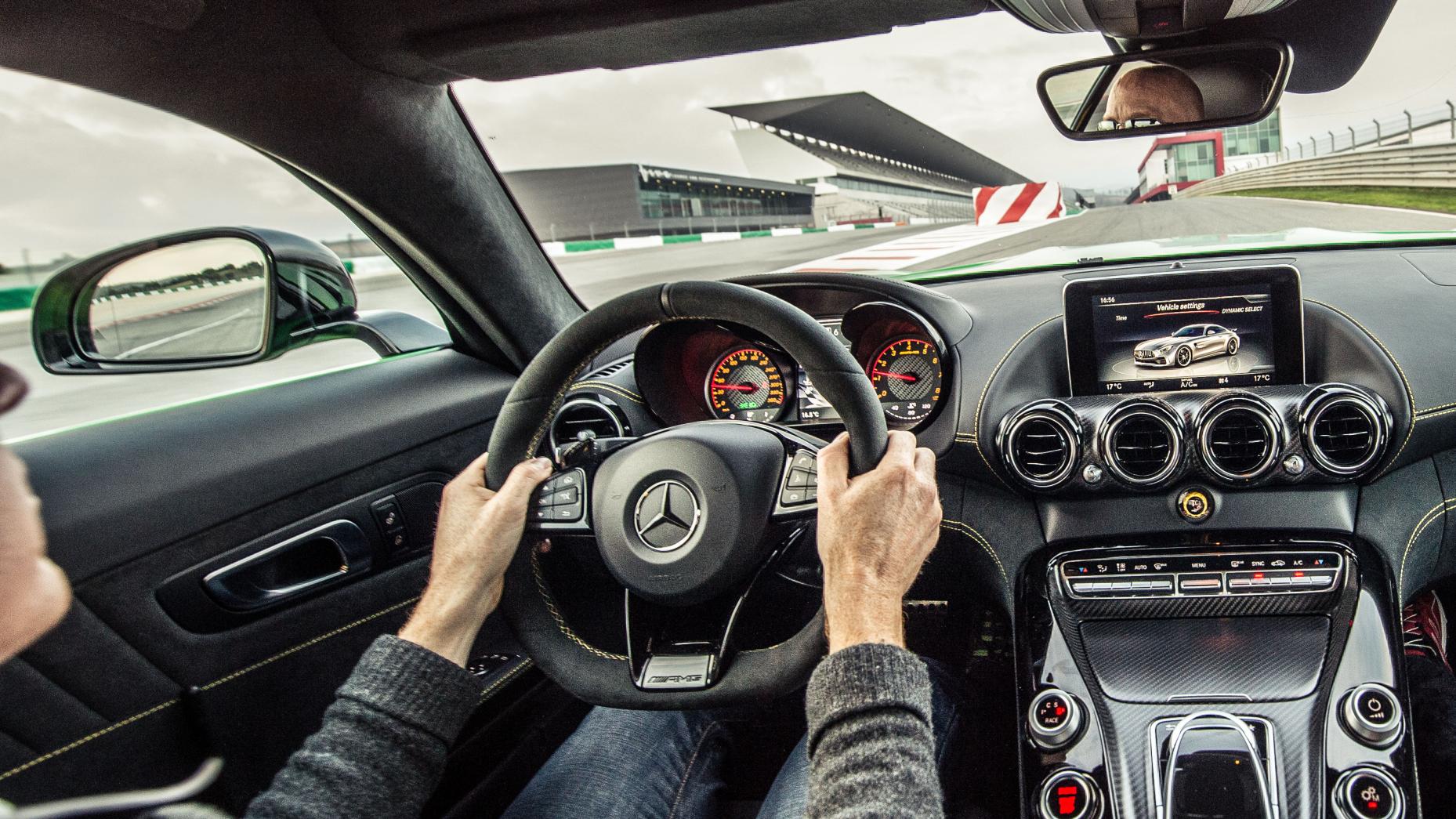
The engine is a mighty thing. I doubt there’s a better-sounding turbocharged car. The noise is colossal, a hollering, deep V8 bellow that comes up from the very bottom of its engine block. And the thrust that accompanies it is equally impressive. The way it punches forward once you’ve got 2,500rpm on the dial is astonishing, easily enough to get that back end moving.
With your view out framed by the broad windscreen and long bonnet, your ears full of V8 and the suspension batting away the worst that Portimão has to offer, the GT R feels very good. It’s not quite up to Porsche 911 GT3 RS levels of tactility and poise – largely because it weighs around 150kg more, but I’m beginning to suspect it has a broader repertoire than just track whip.
Goodbye sunny racetrack, hello rainy mountain summit. We’ve been here 10 minutes, it’s still dark, we had to make a detour on the way because a tree was blocking the road into Monchique, and photographer Rowan is already soaked to the skin. The GT R should be as deeply uncomfortable as he must be right now.
But you know what? It’s not. Again, it’s the suspension upgrades that underpin the progress made. It was quiet and unruffled on the auto-strada, calmer than I’d anticipated, and less tiring than the GT S, simply because you don’t have to concentrate so hard to keep it in a lane.
It soaked up distance, and when confronted with single-lane, rough stuff, what struck me was how much chassis rigidity had improved, and how much more absorbent the ride was.
The stiffer platform has allowed AMG to soften the springing. Bucking and pogoing has been drastically reduced – not totally eradicated because that would be impossible given your backside is pretty much on top of the back axle.
But it’s well controlled by the dampers, and the extra width has enhanced stability. So not just travelling faster, but more in control, too. And it’s such an event to drive – and so unlike any of its most direct rivals.
They’re all mid-engined, but having the engine up front pulling, rather than pushing – and the heavy mechanicals (engine and gearbox) sited ahead and behind you – does give the GT R a different feel.
Personally, I still think a mid-engined layout feels more special, but you might disagree and the GT R is pretty compelling evidence. And it has way more luggage space than anything this side of a 911 Turbo. Handy for those weekends away.
So what is it then, the GT R? In essence, a considerably better AMG GT. Not only more track emphasis, but much better manners everywhere.
More bandwidth, envelope pushed. Price aside, I don’t think it has any drawbacks over a GT S. The seats are fantastic, the driving position low, snug and secure, it rides markedly better and is more stable and drivable.
It’s hugely amusing, too – slightly less grown up than an Audi R8 or Porsche 911 Turbo, less professional than a McLaren 570S. A proper charger, confident and proud. Intimidating? Not as much as the Green Hell Magno paint suggests.






